Continued from yesterday”¦ From there we hopped on another bus and went across town to the Exotic Garden. The garden opened in 1933, after 20 years of planting. There are over 1,000 species of plants, and most are well over 100 years old now. When we got there, we were surprised to find out that it is a cactus garden, with most of the plants coming from the Southwest USA, Mexico, South America and Africa. We were also surprised to find out that our $11 USD entrance fee included admission to the attached anthropology museum and cave, as well. It seemed like a good value for the cost.
The garden is built on a steep cliff, and it is absolutely enormous. It seems to go on forever. They have carved switchback walkways and stairwells into the rocks, and you meander down the trail in and amongst the cactus. There are scattered terraces on various levels that offer fabulous views. The garden is also dotted with small statues, mostly modern art, and a couple ponds, which add to the sense of serenity. Here is a view of Monaco from the top terrace of the garden. You can see Hercules Bay to the left, the rock in the middle, and the Fontvielle Bay to the right.
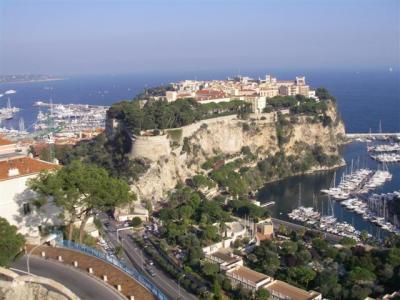
Obviously, the most notable thing about a garden is the plants. And these plants are enormous. Christi and Eric didn’t even know cactuses could get so big. Living in a desert ourselves, we were familiar with a big percentage of the species. It seemed like we were always saying to one another “Oh, I had this in my backyard at my last house”, “My neighbors have this one” and “I like these. I have been thinking about planting it in my yard”. We were also always saying to each other “Oh, there are a lot of these in (fill in city within reasonable driving distance of San Diego”¦ Las Vegas, Sedona, Ensenada, etc).
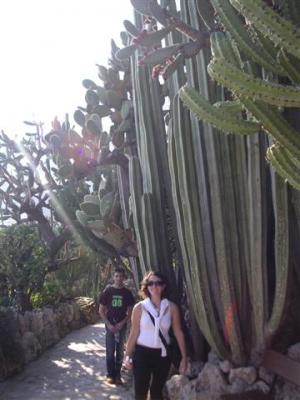
They even have Disneyland plants in the garden, you know, the ones that they shape into animals at Disneyland. Although here they just keep them round. You know”¦ the castle already has stanchions in front of it. Probably if they put a few more stanchions, some plants shaped into animals, and a few concession stands in front of the castle, you could possibly mistake the historic section of Monaco for Disneyland. In all seriousness, Disneyland probably really does model itself after Monaco. And for that matter, Singapore probably does, too. We think Singapore aspires to be Monaco, hence the new casino going in.
Anyway, sorry about the tangent. Back to the garden. We saw a lot of species none of us had ever seen before. Some of them were incredible looking, honestly some of the coolest plants we have ever seen.
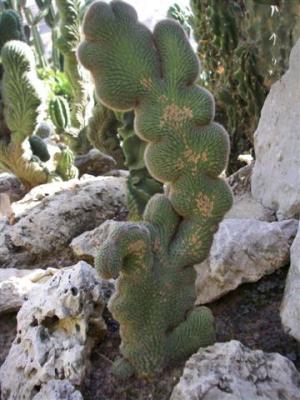
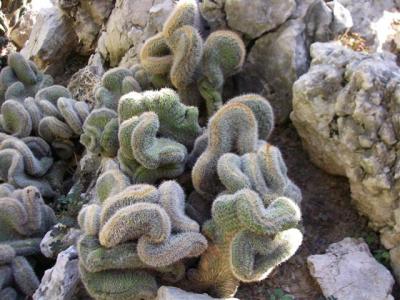
The garden took us quite a ways down the cliff and the path down ended at the cave entrance. You can only go in the cave on a guided tour, and the next tour was about 40 minutes away, so we went to the anthropology museum. For some reason we thought the museum was right next to the cave. It was actually a longer walk than anticipated. We stayed roughly at the same level on the cliff, but the path took us up and down quite a bit. The garden continues all through here, though a lot of the land is used as the nursery and blocked off to visitors.
The anthropological museum was small, so we had no trouble getting through the whole museum and back before the cave tour started. The signs were mostly in French, so we weren’t sure what we were looking at, but we did know from the brochure that everything in the museums is from excavations within Monaco and the surrounding region. There were lots of bones, both from animals and humans. Like most anthropology museums, there were lots of bits of pottery, stone and shell that were probably used as tools, a few pieces of intact pottery, full fledged tools, and so forth. There were a few replicas of cave paintings which were interesting. There were four pieces of art sculpted into stone that were really interesting, as well as a handful or so of figurines. All the carvings and most of the figurines were of full figured women with large breast and hips, which reminded us of Malta’s ancient artifacts. French language skills would have been helpful in this museum.
The cave is a natural formation believed to be 400 million years old. They have found the remains from pre-Neanderthal people (250,000 years ago), Neanderthals (60,000 years ago) and Cro-Magnon man (30,000 years ago). They have discovered the remains of red deer, Asian dogs, wolves and rhinoceros dating in warmer eras and reindeer, polar foxes and marmots dating in colder eras. This cave happens to be the warmest one in Europe, with year round temperatures of 18 20 degrees Celsius. It is believed that it is so warm because one of the exterior walls is exposed to direct sunlight. The cave is made of calcium carbonate.
We took a staircase down what would be the equivalent of several flights of stairs before getting to the mouth of the cave. Once inside, the staircase just kept going and going and going. It was a total of 300 steps down 60 meters. Most of the steps were carved into the rock, but there were some areas where there was no natural way down and metal stairs bridged the gap to the next section of cave. There was water dripping, the steps were a little slippery, and the handrail was wet and slimy, and the slime it left on your hands didn’t smell very good.
Eventually we got to a metal walkway. The walkway follows a fairly narrow chamber to a large “room” within the cave, then loops back to the steps following a different chamber back. We’ve seen a lot of caves now, and this cave is similar to all the rest, though, granted, this one is larger and deeper than most we have been in. You have your stalactites and stalagmites and columns, your big cavernous areas and your small little spaces. But caves are amazing, and we don’t think we could ever get bored in a cave, especially one like this that is huge and completely full of unique and interesting formations. You know how we have said that you can sit in one of those overwhelming Baroque era churches for days, staring at the walls and ceiling before you feel like you have finally taken it all in? It is the same kind of feeling with a cave like this one. But there is more to a cave than just appreciating the aesthetic designs, it is appreciating that Mother Nature made all this “art”. We have mentioned a few times now where the vast power of Mother Nature really hits home for us, such as big seas, lightening storms and volcanoes. Caves are another place where you are humbled by Mother Nature, both for her power and for her creative genius. The second photo is of the ceiling in one section.
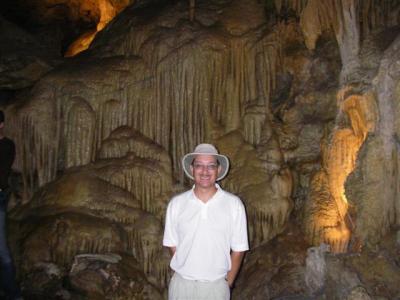
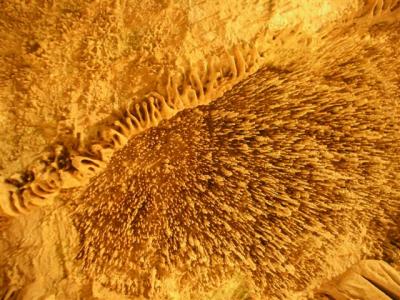
We again walked around La Condamine for a while before settling on a place. Today we passed Mazarati, Rolls Royce, BMC, and Mini dealerships, but the guys weren’t as interested in those as they were the Ferraris. We found a great restaurant and had a nice dinner.
